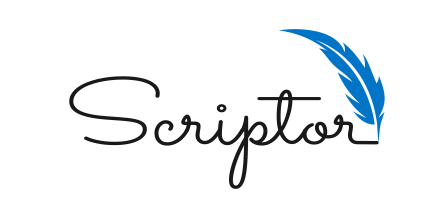Wouldn’t it be great if you could just publish the book you worked so hard on, instead of facing down endless rejection letters from publishers?
Sadly, the industry as it stands today isn’t set up to the authors benefit. It is difficult to get an agent let alone getting your book in front of an editor.
That does not mean all is lost. It is still entirely possible to secure a publishing deal, and if you believe in your project more than the publishers do there are other alternatives.
How Will You Publish Your Book?
Here we will cover your two main options for getting your book published. Use these pros and cons to decide which method is right for you.
Traditional Publishing
Most people are familiar with traditional publishing. This refers to the standard system of getting a ‘book deal’. You submit your manuscript to a publishing company with the hope they accept it. If it is accepted (usually after many, many rejections), then you sign a contract which gives the publishing company full rights to your book.
They will complete the work on getting it published as well as create marketing opportunities for you and you will receive royalty payments for the sale of the books.
Self-Publishing
On the other hand, you also have the option to self-publish your book. If you decide to go this way, then you actually become the publisher.
This means you will not be rejected, and it allows you to retain full rights of the book. In addition, you receive a higher percentage of the royalties as well.
There are pros and cons to both methods.
With traditional publishing, there are no upfront costs and you don’t have to do the editing, design and marketing yourself. However, the struggle to get accepted is very real.
Only a small percentage of submitted manuscripts are actually selected for publication which means that you will most likely face many rejections.
In addition, once you sign the publishing contract you lose your creative control of the book. We have seen authors who had a vision for their book become very frustrated when the publishing company wanted to go in a different direction.
The other things to consider with this type of publishing are that it takes a longer time to get the book to market AND the royalty rate percentages are less.
Self-publishing solves some of these problems. First, you will never have to go through rejection as a self-publisher. In addition, you retain full creative control of the book, and get a higher percentage of the royalties.
Self-publishing also happens much more quickly than traditional publishing which means it takes less time to get your book into the hands of people who want to read your message.
The downsides of self-publishing are that you end up doing it all yourself, meaning you have to find editors, graphic designers and people to help you market it. That can be an overwhelming task.
Self Publishing Tips
As mentioned above, traditional publishing deals are very hard to come by today which is why you should consider doing it yourself. Below are some of the most crucial steps to consider when you want to self publish your book.
1. Design your book professionally
The book cover is more important than most people think. This is precisely why you should go out of your way and look for a professional designer to design the book.
Most professional cover designers design covers and format books, so you shouldn’t worry about the additional costs of having both tasks done separately. There are many professional designers online so it shouldn’t be a problem finding one.
If you don’t want to hire a professional designer, you can design your book on your own using readily available tools only. Websites like Kindle Direct Publishing (KDP), Amazon’s publishing division, offer numerous resources for formatting and designing books.
You can use these resources to come up with a professional book design on any theme you can think of. KDP has many templates and PDFs that guide you throughout the process.
2. Get your book on Amazon.com via Kindle Direct Publishing
Amazon is undoubtedly the biggest bookseller out there which makes it the best platform to use. Amazon uses KDP solely to help people get their e-book and paperback books out there without having to go through traditional routes.
KDP is therefore the best and easiest platform for authors who want to bypass the tedious and disappointing process of finding a good publisher.
KDP has plenty of help sections that outline everything you need to know about self-publishing. You can simply go to the site and follow the simple step-by-step instructions to self publish your book.
KDP offers numerous benefits. For instance, you don’t need to pay a dime to get your book printed. Also, you don’t have to worry about customer service, storage, or shipping.
What to Make of All This
In summary, writing a book and self-publishing couldn’t be easier today, but you will undoubtedly need some help.
Although it is possible to write and self-publish your book on your own, there are also ways to make the entire process easier.
At Scriptor, we have all the resources you need to accomplish all of the steps listed above. In addition, we have coaches and project managers who hold you accountable and keep you on track so your book can be published as quickly and easily as possible.




